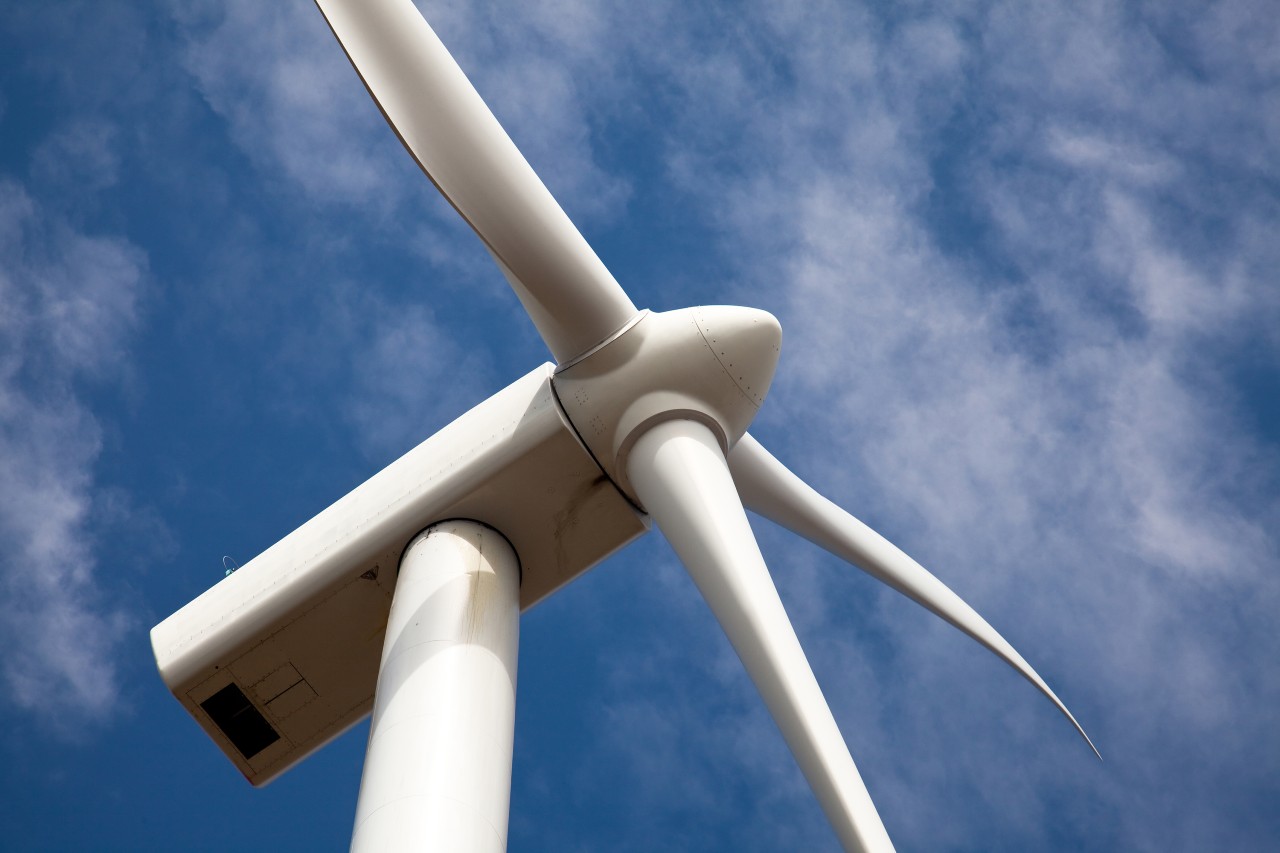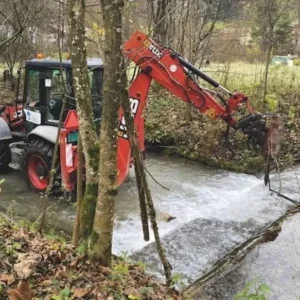
The question of recyclability has loomed over wind turbine blades, as more and more turbines installed over the past few decades come to the end of their life cycle. Offering an answer at last, Siemens Gamesa have launched the world’s first fully recyclable wind turbine blade – the aptly titled RecyclableBlade. Nicholas Kenny speaks to Gregorio Acero, head of quality management & health, safety, and environment at Siemens Gamesa, about this new technology, its development, and the potential it poses for the industry at large.
The wind industry has seen many firsts over its 130-or-so-year history. The first wind turbine to produce electricity, for example, was built in July 1887 by Professor James Blyth of Anderson’s College, Glasgow, Scotland.
Constructed using cloth sails in the garden of Blyth’s holiday cottage in Marykirk, the turbine was used to charge accumulators to power the cottage’s lights, making it the first house in the world to be powered by wind-generated electricity.
As described in a paper to the Royal Philosophical Society of Glasgow on 2 May 1888, the turbine was “of a tripod design, with a 33ft windshaft, four arms of 13ft with canvas sails, and a Burgin dynamo driven from the flywheel using a rope”. It produced enough power to light ten 25V bulbs in a moderate breeze, according to Blyth.
He would improve on his creation over the next few years, before settling on a final design that operated for a quarter of a century. Indeed, the turbine became efficient enough that Blyth would offer the surplus electricity it produced to the people of Marykirk to light the main street of the town. His offer was rejected, however, as the locals reportedly thought electricity was ‘the work of the Devil’.
While naysayers and nimbyism remain plentiful even today, the world has come to see wind power less as a force of evil and more as heaven-sent. In March 2021, a UK government poll showed public support for offshore wind at 76% and onshore at
70% – a far cry from Blyth’s time. But that’s not to say that it’s without its own problems – the devil, as it were, is in the details.
Although the benefits of wind power are numerous and readily apparent, one of the main sticking points for the industry has been over the difficulty in recycling turbine blades after they reach the end of their life cycle, with many ending up in landfill.
The difficulty in crushing, recycling or repurposing turbine blades stems from the fact that they are built to withstand hurricane-force winds, explains Gregorio Acero, head of quality management & health, safety, and environment at Siemens Gamesa.
“Keep in mind that many of these blades that we’re manufacturing – especially for offshore – are designed to be spinning during a typhoon in order to attract maximum energy. So, as you can understand, a structure that is that strong and difficult to destroy was always going to a present a recyclability challenge.”
However, challenges exist to be overcome and Siemens Gamesa have stepped up to the plate. Over a hundred years after Blyth’s original turbine, on 7 September 2021, the company officially launched the world’s first fully recyclable wind turbine blade – the RecyclableBlade.
Unveiled well ahead of Siemens Gamesa’s pledge to develop a recyclable turbine blade by 2030, and from there a fully recyclable turbine by 2040, this breakthrough puts the industry one step closer to ridding itself of turbine waste entirely.
Made for purpose
The RecyclableBlade, Acero stressed, is fundamentally no different than any other blade on the market. The same components – fibreglass, PET plastic, epoxy resin and so on – are used in the same way, the only real change is that the resin has a different composition. “The technology for manufacturing the blade is the same, the process is the same,” Acero notes. “We simply changed the resin.”
The first six 81m-long RecyclableBlades have already been produced at Siemens Gamesa’s blade manufacturing plant in Aalborg, Denmark, and are set to be installed at RWE Renewables’ Kaskasi offshore wind power plant in Germany, which will serve as their first field pilot. Current plans are for the project to be producing energy from 2022 onwards, where their performance will be monitored and assessed.
At the end of the RecyclableBlade’s life cycle, Siemens Gamesa will take the blade and place it into a bath with a mild acid – Acero cites the use of acetic acid in this case. “I always tell my German friends that we finally found a use for the bad German wine,” he jokes. The acid “also has a natural origin, because it can be produced using enzymes and bacteria, and so on. And there’s heat. So, heat a mild acid – that’s all you need.”
Once the blade is in the bath, it is gradually broken down as the resin dissolves. The resin itself can then be recovered as a thermoplastic, which can be used for manufacturing chairs, among other things.
The fibres are also recovered, and potentially reused for new blades, though after the full length of the turbine blades’ life cycle, out in the middle of the North Sea or enduring typhoon’s in South Asia, it’s likely that the fibres’ resistance levels will have been reduced.

The path ahead
Of course, the future of this new technology rests on market demand. While there has certainly been a call for a fully recyclable turbine blade, Acero notes that the RecyclableBlade is slightly more expensive than previous models.
This is due to the cost of the research and development that Siemens Gamesa undertook to create the blade, and for the changes that the company will have to make in its production facilities, if the product is to go into full industrialisation.
“Yes, the price is going to be slightly higher, but what we’re offering is actually an opportunity and we think that it’s going to be a good business case,” Acero says. “Because the more we’re moving towards the future, the more we see that landfill is going to be banned [in Europe], and we have to find a solution.”
While Siemens Gamesa may have been the first to develop a fully recyclable turbine blade, it is likely that its competitors will also follow suit. Vestas recently accelerated their own plans, now intending to develop zero-waste blades by 2030.
“I will be welcoming competition in this area because it’s beneficial for everybody,” Acero says. “I know that some of [Siemen Gamesa’s competitors] have already announced theoretical solutions – but still they don’t have the blades. We already have the solution. It’s not a theory, it’s a blade.”
Given the rate that Europe is currently producing turbine blades in order to achieve its renewable energy goals, it’s likely there will be a strong appetite for a fully-recyclable turbine blade.
Some figures suggest that 200,000 blades will be required to meet Europe’s energy needs by 2050, all of which the RecyclableBlade could save from landfill. That’s enough blades to cover more than half the circumference of the earth, Acero says, adding that, to put things into perspective, that would require over 1.6 million African elephants.
And what about the many hundreds of thousands of blades that have already been produced and installed. “This is an area where the industry comes together on,” Acero says, noting that it’s not merely Siemens Gamesa, Vestas or GE looking for an answer to this problem, but the industry as a whole.
As the rightful heirs to Blyth and all those who followed after, the modern wind industry will have to continue to develop bold new solutions to the challenges ahead. That the companies within it can strive towards the same goal, building off each other’s discoveries, is a positive sign. The RecyclableBlade is a bold step in the right direction – all that remains to be seen is what the next one will be.
This article first appeared in World Wind Technology Vol. 2 2021. The full publication can be viewed online here.






